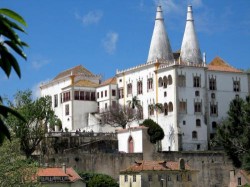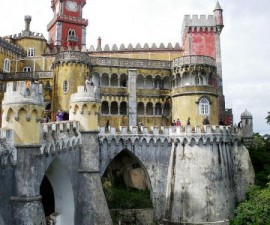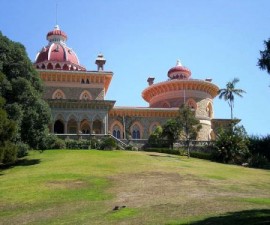 The Sintra National Palace, or Palacio Nacional de Sintra, is located in the heart of the romantic town of Sintra close to the far west coastline of central Portugal.
The Sintra National Palace, or Palacio Nacional de Sintra, is located in the heart of the romantic town of Sintra close to the far west coastline of central Portugal.
In a country where royal palaces abound thanks to Portugal’s rich and diverse history, the Sintra National Palace is hailed as being the best-preserved example. It began life in the early fifteenth century and grew organically until the late nineteenth century, providing an eclectic mix of architecture that fits perfectly with the diverse and slightly magical architectural styles that populate this beguiling town.
As Sintra’s popularity has grown, so too has the popularity of the Palacio Nacional de Sintra, aided by its inclusion as a designated UNESCO World Heritage Site as part of the unique cultural landscape of Sintra.
Steeped in history and legends
The Palace’s origins date back to Islamic times when Sintra was dominated by two castles – the Castelo dos Mouros which is now a protected ruin presiding over one of the highest peaks in the Sintra Mountain range, and the present-day National Palace.
It was taken into the possession of Portugal’s Royal Family in the twelfth century and they then embarked on a programme of construction over several centuries, creating a beguiling mix of Gothic, Manueline and Moorish architectural styles to match the already diverse and interesting landscape of the town. These days the earliest surviving sections date back to the fourteenth century Royal Chapel, however its strong heritage lives on.
The Palace has been inhabited more or less continuously since it was first constructed and it was here that King Afonso VI was forced into exile from 1676 until his demise in 1683 after being deposed by his brother Pedro II due to his alleged mental instability.
 During the great Lisbon earthquake of 1755 the main tower over the Arab Room was lost and several other areas of the palace sustained major damage, however Queen Maria I set about some major renovation works including repairing some of the older wings.
During the great Lisbon earthquake of 1755 the main tower over the Arab Room was lost and several other areas of the palace sustained major damage, however Queen Maria I set about some major renovation works including repairing some of the older wings.
With Sintra’s rebirth as a favoured summer retreat amongst Portugal’s royals and European aristocracy, so too came more renovations and additions, in particular by Queen Amelia who had a particular fondness for the Sintra National Palace. After the Republic was founded in 1910 the palace returned to the state and has become a popular tourist attraction ever since.
A series of interconnecting courtyards, stairs, corridors and galleries join the individual sections into a cohesive whole and wandering through this maze of styles and historical features is one of the most exciting activities that can be placed on the itinerary of any visitor to Sintra. Whilst Palacio Nacional de Sintra is now officially Portugal’s most-visited palace, its sheer size and majesty ensure that it is not just worth the visit but also that it never becomes too crowded to enjoy.



